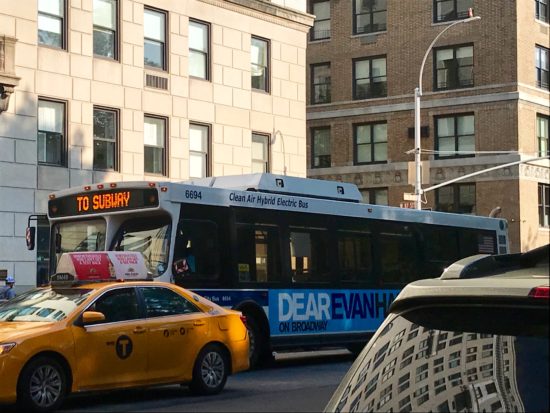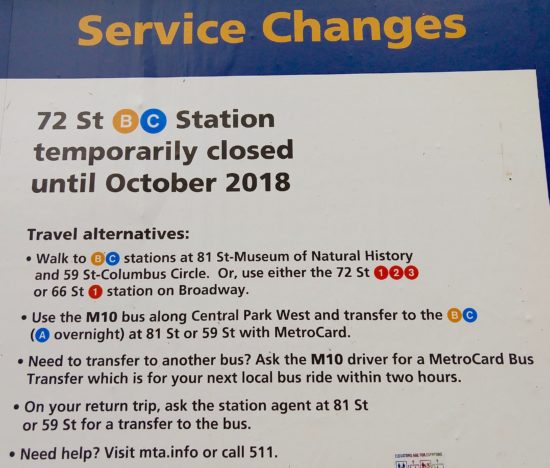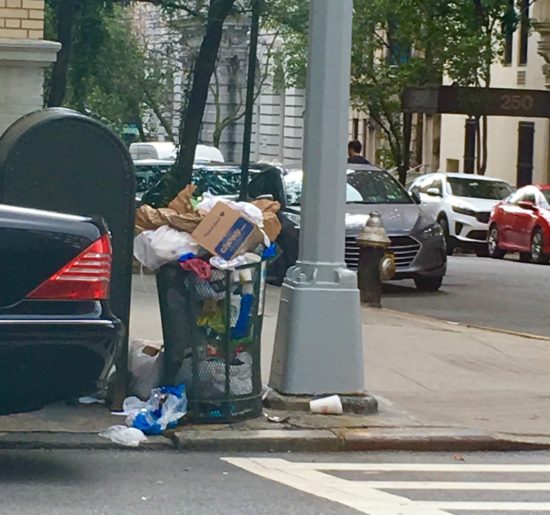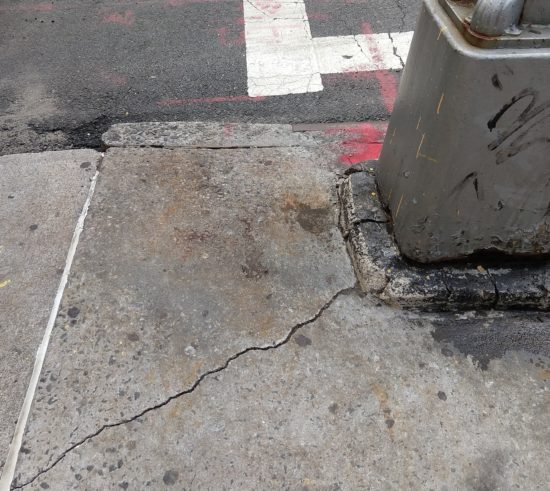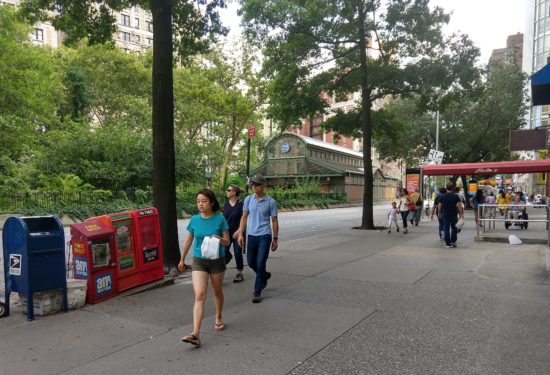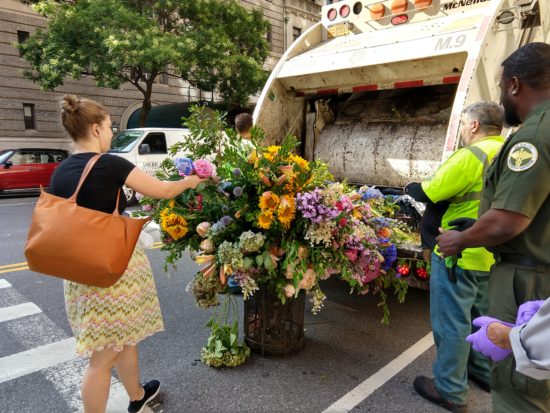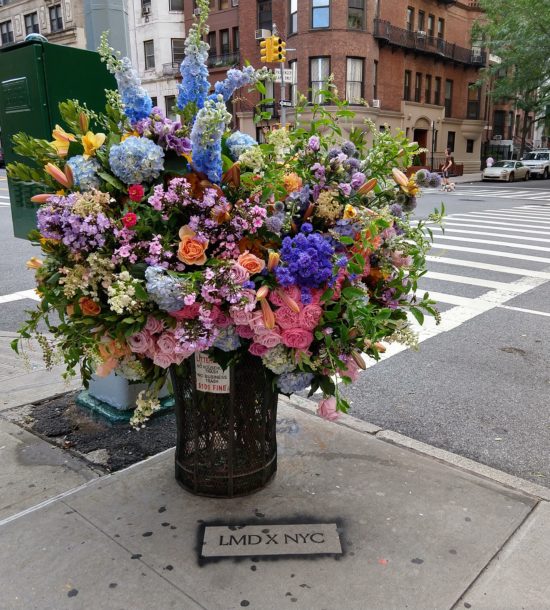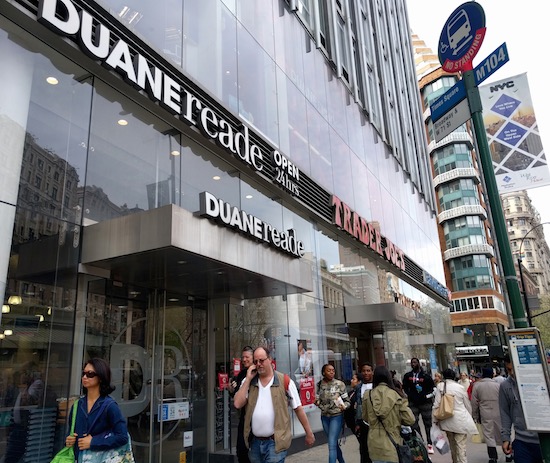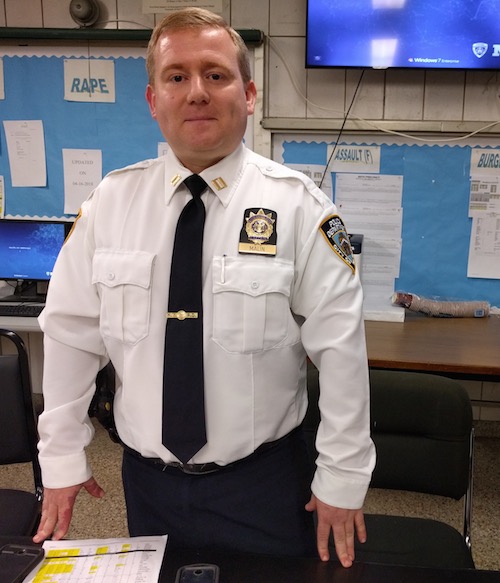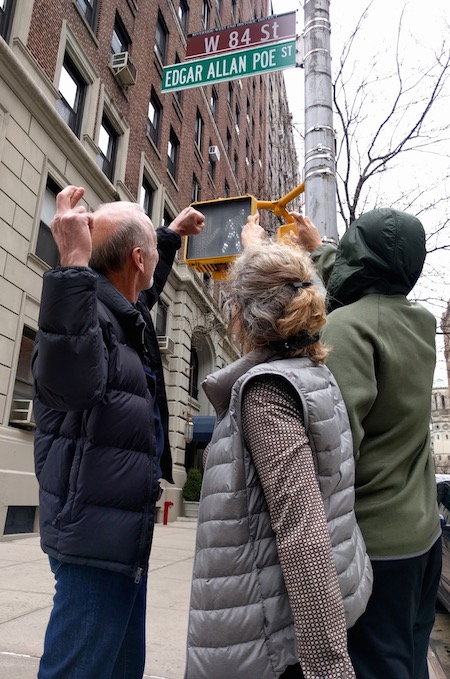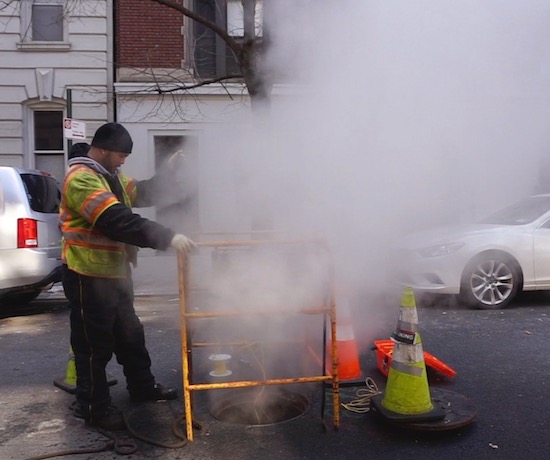Why Jeffrey Toobin Loves the Upper West Side
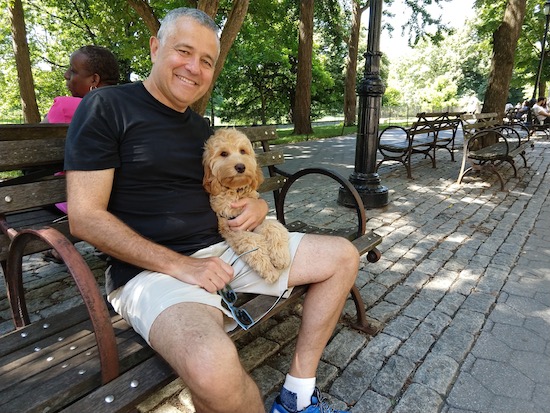
Originally published on July 30, 2018 in West Side Rag
By Joy Bergmann
Jeffrey Toobin chuckled as he grabbed a bench in his favorite place in New York City – Riverside Park. “My wife thinks it’s very ambitious of me to live 17 blocks from where I grew up.”
The best-selling author, New Yorker staff writer and CNN senior legal analyst spent his childhood at 90th and Riverside and has lived in the same West 70s building for 23 years with Amy B. McIntosh, CUNY’s Associate Vice Chancellor. The empty-nesters raised a daughter and son here, and recently added Breezy, a Labradoodle puppy, to the family.
An unabashed UWS fanboy who resists nostalgia, Toobin spent a recent hour away from working on his next book – about the Mueller investigation – to talk Fairway strategies, mugger money and the joys of the dog run. After being told that all comments were on the record, Breezy chose to remain silent. This interview has been edited for length and clarity.
*
WSR: Always an Upper West Sider?
JT: Effectively I’ve always been an Upper West Sider. Except for college, law school and the three years my wife spent in the Obama administration when we lived in Washington. But we never gave up our apartment here. It really is home.
Amy moved here in 1984, and I remember telling her which blocks she could walk on and which ones she couldn’t because the west side was still pretty dangerous.
By the time our kids came along in the 90s, it was almost hard to remember that because the whole place had become so gentrified. Which is a mixed blessing, but the reduction in crime is nothing but welcome.
WSR: You went to Columbia Prep...
JT: I went to PS 166 and then Columbia Prep. My kids went to Ethical Culture and then Fieldston. One of my happiest memories of their childhood was walking them to Ethical.
WSR: You’ve no doubt seen a lot of changes around here.
JT: It’s not that I’m one of these nostalgia buffs. The neighborhood is unambiguously better than what it was, but I remember walking on West End Avenue when they were shooting the scenes for “Network” when the people are yelling out the window, “I’m mad as hell and I’m not going to take it anymore.”
WSR: Classic. And timely.
JT: One difference from when I grew up? It’s a lot more rich people.
I grew up at 175 Riverside Drive, which was nice building that went co-op after my parents moved in in the 60s. It was accountants, school teachers. And now, 175 Riverside Drive, every apartment is in the multiple millions of dollars. I regret that lack of diversity. The vibe is much wealthier than it was.
WSR: Any places you pine for that are no longer around?
JT: The only two commercial establishments that I unambiguously miss are the Royale Bakery on north side of 72nd Street between Broadway and West End that’s been gone for like 20 years. They had this Mitteleuropean feel and amazing rugulach – the raspberry, not the chocolate. And the All State Cafe on the south side of 72nd Street [now the Emerald Inn].
When our kids were about 4 and 6, there was a serious fire above us in our apartment building. We had to evacuate. But where do you go at one in the morning? We went to the All State Cafe and they were so great. They brought our kids milk. And they certainly didn’t bring us milk. Amy and I were like, “We need a drink!” Our cat, Lightning, was at the bar.
WSR: Ha!
JT: I love the way the neighborhood was, but I love it now. I think New Yorkers recognize that change is part of living here. It’s part of the organic process of a successful city.
WSR: What differentiates the UWS from other nabes?
JT: There’s a settled feeling here. There’s not a lot of space for a lot of new buildings. It’s just so convenient to a lot of places where people work. It’s just an intensely desirable place to live.
I walk to CNN at Columbus Circle and have it timed to the second. I can roll out of bed and be on television in 35 minutes which is pretty great.
WSR: OK, but kvetching is the official sport of the UWS...
JT: That’s true.
WSR: So, what do we need to improve?
JT: I’d like to see greater diversity in terms of income and ethnicity. I’d like to see more independent stores and fewer chains. But I don’t have a lot of complaints.
I mean, we’re sitting in Riverside Park. The Riverside Park in which I grew up, 75 percent of the benches in front of us here would’ve been broken, and there would’ve been graffiti, and we would’ve been in genuine fear of getting mugged. None of which is true now. That’s an unambiguously good thing.
I was a mugged as a kid. A lot of parents of my friends would make sure their kids had a five-dollar bill with them at all times – mugger money so you’d always have something to give a mugger and he wouldn’t kill you. Imagine how terrible that is. That’s gone, that concern.
WSR: Do you feel like the edge is gone, too?
JT: Edge is overrated. I do wish the city was more affordable for people of more limited means. There’s no question that that’s a problem. But if edge means graffiti, if edge means muggings, good riddance.
WSR: Switching gears: Are you Team Fairway or Team Trader Joe’s?
JT: Very much Team Fairway. I’ve never stepped foot in Trader Joe’s. Not because I have any objection. It just never occurs to me to go in there.
WSR: Do you have survival tips for people encountering Fairway for the first time at, say, Sunday at 5pm?
JT: Bring shoulder pads. It can get rough in there, no question about it.
WSR: Where do you love to get your nosh on?
JT: My favorite local business is Giacomo’s. It’s this tiny little food place on 72nd next to the [West End Superette] bodega. It was the first place my daughter was allowed to go by herself. She became coffee-obsessed at an embarrassingly young age and she would go buy coffee there. I take great pleasure in supporting a business like that.
Another one of our favorite stores is what we call the Pink Awning Store even though it hasn’t had a pink awning for like 15 years. Stationery & Toy on 72nd between Columbus and Amsterdam. It’s just an amazing store. Whatever you’re looking for, they always have.
WSR: What is the perfect UWS day for you?
JT: I like good rather than perfect. I love taking Breezy to the dog run early in the morning. Just to watch him tear around with the other dogs gives me great pleasure. Then it would be nice to go to the JCC with my wife and work out. And then she has a real job, so she goes to work and I just go back to the apartment. I’d work for a while, get lunch at Giacomo’s and when it’s time to get ready for “Situation Room,” walk down to CNN. That’s a good day.
WSR: What’s Wolf Blitzer really like?
JT: Wolf and Anderson [Cooper] are two of the most sane people you’ll ever meet, which is unusual for television stars. They are relentlessly normal. And that vibe spreads through the entire network. There is no reward for eccentricity at CNN.
WSR: What’s the distinguishing characteristic of an Upper West Sider?
JT: I don’t know. I’m a journalist, but I don’t think I’m the most observant person on the world. I don’t have a picture in my mind of what an Upper West Sider is. But I just did a piece in the New Yorker about [Congressman] Jerry Nadler, and if I were looking for a hardcore Upper West Sider, he’s a pretty good example.
WSR: What’s the biggest misconception about the UWS? What do people get wrong about it?
JT: Do people have conceptions at all about the UWS?
WSR: I think so.
JT: Really? Well, I think it used be known as kind of bookish, liberal and insular. Now, I think it’s too expensive to be bookish. Though I heard Shakespeare & Company is coming back.
WSR: They are.
JT: I think the UWS’s uniqueness, it’s a lot more similar to the Upper East Side than it used to be. But again, I don’t want to give the impression that everything used to be better. Everything did not used to be better.
WSR: Thanks for taking time today. Your schedule has been SO leisurely...
JT: It’s been crazy. All Trump all the time. And the Supreme Court. The pace of news has been more relentless than any period I can remember. I’m also working on a book about the Mueller investigation.
WSR: But you have to wait until the report is issued, right?
JT: Yes, I do.
WSR: Do you know when it’s coming?!
JT: No. No, I don’t.
WSR: A lot of people are in a fugue state of nervous anxiety about the political situation. Got any prescription for coping better?
JT: It’s okay to take news vacations. A week, two weeks. I don’t have that luxury, but I think news vacations are not a bad idea. There will be a new crisis in two weeks, and you’ll have had some Zen moments in the interim.
